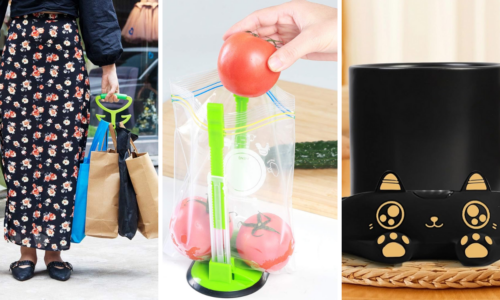If it seems as though you’re not only spending more at the grocery store but you’re also getting less, you are probably correct. It’s a practice known as shrinkflation, or downsizing products but charging the same amount, and experts say it is on the rise.
What Is Shrinkflation?
Shrinkflation is a sneaky way that brands can hide higher product prices.
“Shrinkflation involves firms keeping the price per package the same while reducing package size,” Jayson L. Lusk, head of the Department of Agricultural Economics at Purdue University, told “Today.”
This deceptive practice can be challenging to spot, but it isn’t illegal as long as product sizes remain clearly labeled. For instance, according to NPR, small boxes of Kleenex have shrunk from 65 to 60 tissues. Once 5.3 ounces, Chobani Flips yogurts are now only 4.5 ounces.
And of course, as NBC News points out, certain fast food places are also giving you less food in each order. For example, Domino’s sells its chicken wings in eight packs instead of 10-packs now.
These minor decreases can easily go unnoticed but add up over time. However, there’s a Reddit thread dedicated to finding examples of this kind of downsizing, with users documenting changes in everything from Gatorade bottles and hand sanitizer containers to chicken tenders at Zaxby’s.
What Is Causing Shrinkflation?
“Manufacturers tell me when they face increased costs of raw materials or the price of gasoline goes up making it more expensive to ship their goods to the store, they are under pressure to either raise prices or downsize their products,” Edgar Dworsky, founder and editor of Consumer World, told “Today.” “And sometimes they may do both.”
Dworsky told the Washington Post that manufacturers have just three options in this scenario. “Raise the price, but consumers notice and risk unhappy customers,” he said. “They can reformulate with cheaper ingredients; and the third option is to do an inconspicuous price increase by making the product smaller but [keeping] the same price.”
However, some experts are skeptical about the reasons behind the recent surge in shrinkflation. For instance, Hitendra Chaturvedi, professor of supply chain management at Arizona State University’s W.P. Carey School of Business, told NPR he doesn’t doubt companies are dealing with labor shortages and higher costs. But the fact that some companies are also experiencing record profits troubles him.
“I’m not saying they’re profiteering, but it smells like it,” Chaturvedi told NPR. “Are we using supply constraints as a weapon to make more money?”
How To Fight Shrinkflation
While prices and product sizes may be out of your control, there are a few steps you can take to get the most for your money.
- Pay attention to product sizes. If you notice a brand you typically buy has gotten smaller, compare similar products to find a better deal. Be sure to compare the price per unit.
- Shop store brands. Not only are store brands, which offer generic versions of a product, usually more affordable, but they’re also comparable in quality (sometimes even made by the same manufacturer as their name brand counterparts). They’re also typically the last to downsize.
- Buy in bulk. Bulk products almost always have a lower price per unit than individual packages. Plus, they last longer.
Taking the time to pay attention to sizes and prices, compare brands and shop wisely can help you get what you need while sticking to your budget.









